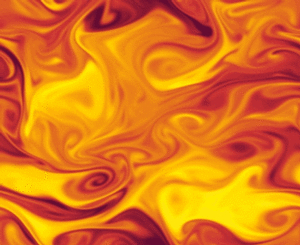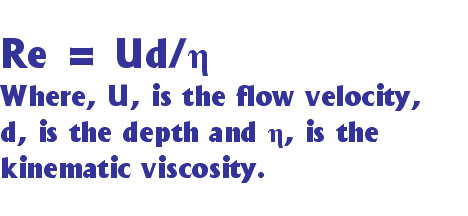 image
of turbulent flow
image
of turbulent flowimage taken from: http://cams.njit.edu/
Magma is composed of three main components
The
way that these three components interact is one of the main focuses of petrologists
and volcanologists.
Also, the way that these components interact is govered by some of the basic
laws of physics.
Viscosity
In
layman's terms viscosity is a fluids resistance to flow and is important in
many volcanic processes. Viscosity is defined as the internal resistance to
flow by a substance when a shear stress is applied. Many factors affect a magma's
viscosity. Temperature is one of them, as a with all fluids as a the temperature
increases the viscosity also increases. This example can be seen when examining
a rhyolitic melt, when the temperature decreases from 1300°C to 600°C
the viscosity increases by more than eight orders of magnitude. The silica content
and the water content also affect a magmas viscosity. The more silica is in
a magma the more viscous the magma will be due to the strong silica-oxygen bonds.
When water is added to a magma it has the ability to break the silica-oxygen
bonds and therfore, the viscosity decreases.
Rheology
Rheology
is the study of how materials flow and it is very important when examining volcanogenic
processes. Two main types of flows can be defined: laminar and turbulent. Laminar
flow occurs when the motion of the particles of fluid is very orderly with all
particles moving in straight lines parallel to the walls. Turbulent flow occurs
when the streamlines or flow patterns of a fluid are disorganized and there
is an exchange of fluid between these areas. The Reynolds number (Re) can be
calculated to determine whether a fluid is turbulent or laminar.
 image
of turbulent flow
image
of turbulent flow
image
taken from: http://cams.njit.edu/

When the Reynolds number is less than 10 .... it is considered laminar, when it is greater than 100 it is considered turbulent. The areas in between are defined as transitional and can go either way.
Rheology and viscosity are imporatnat to volcanologists because it will determine if Magma Chambers will convect and overturn. When the Rayleigh's and Reynolds numbers are high enough it is possible for these chambers to over turn which can lead to volcanic eruptions